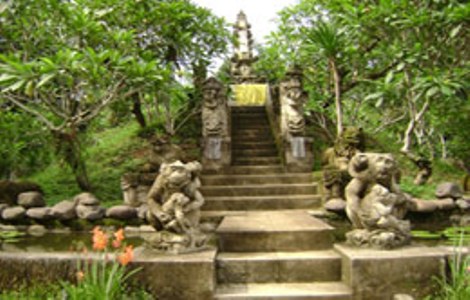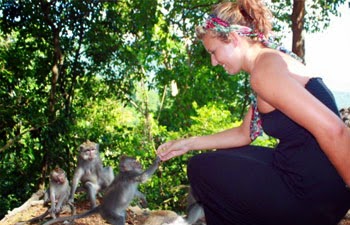
Mount Rinjani 3726 M
Mount Rinjani is a mountain located in Indonesia, exactly in Lombok island, West of Nusa Tenggara ( NTB). Mount Rinjani is an active volcano and is the second highest mountain in Indonesia after Mount Kerinci in Sumatra. There are lake Segara Anak, it has a natural hot spring, an eruption in the caldera has formed a new small cone known as the New Mount (Gunung Baru). Mount Rinjani is a very active volcano, There was a spate of activity from 1994 to 1995 which resulted in the further growth of the crater cone Gunung Baru, since renamed Gunung Barujari (Finger Mountain). On 27 April 2009 Gunung Barujari became active again with that activity continuing through to May 2009. The summit ascent routes were closed at that time as the eruptions intensified with plumes of smoke and ash as high as 8,000 m.
In the middle and at the bottom of the mountain is a fairly heavily forested with typical tropical species, Lombok is in the East of Wallace Line and some bird species with Australasian affinities are apparent. These include honeyeaters, cockatoos and green hanging parrots, in addition to species whose heartland is to the West including tits, weavers and tailor-birds. Above the tree line though the slopes are barren and rugged scree slopes and volcanic rock. The views of the crater lake are quite breath-taking from the caldera rim, as is the sunrise. From the absolute peak you can see Bali to the west and Sumbawa to the east.
Mount Rinjani is the best climbed during the dry season (April-November). The trekking trails are generally closed during the rainy season. In recent years the early months of the 'dry season' have become more prone to rain and you should be prepared to encounter heavy rain and low visibility with slippery tracks underfoot at any time, particularly in the afternoon. It gets very cold on the mountain above 2,000 m and nears freezing at the summit. Warm clothing is an absolute must. in Rinjani Mountain you can see these several places are as follows:
- Segara Anak, the crater lake.
- Aik Kalak hot springs, at the crater rim.
- The Mulang Pakelem. This annual Hindu ceremony at the crater lake dates from the 18th century invasion of Lombok by Balinese from the kingdom of Karangasem and attracts hundreds of participants. The lake is sacred to Hindus and the sight of hundreds of white clad Hindu pilgrims sitting and praying here is a wonderfully uplifting experience.
- Gua Susu (Susu Cave). One of the three famous caves (Gua Susu, Gua Payung, dan Gua Manik) at Rinjani.
- Sendanggile Waterfall, which is located in the foot of Rinjani mountain, it’s has amazing view, so you have to visit this place.
Things to Do
- if you want to climb Mount Rinjani you can use the several routes there are Senaru ascent route, Sembalun Lawang Route, and Benang Stokel route.
- In Sembalun Lawang, you will find some way to go to villages that are famous for their weaving activities. If you are in the Senaru area, take your time to explore the local villages as you will find unique characteristics of communities that are still very primitive, especially the different customs and cultures. in Senaru, you can also visit the waterfall that was very beautiful that include Sendang Gile waterfall and Tiu Kelep waterfall is located right at the foot of Mount Rinjani.
- There are also other activities centered around the park, including the eco-walk and tree planting.
How to get there
Most of the visitors come to Mount Rinjani through Senaru village located at an altitude of 600 m from the sea level, located on the north side of the mountain and close to the main beach resort areas in the West, it including in Senggigi. In addition to Senaru, you can also get there via Sembalun Lawang located at an altitude of 1.150 m from sea level, away closer to the mountain Rinjani, the village can be accessed from the north coast road.
Before doing the climb you have to manage your costs and permits, go to the park you will be charged Rp. 150,000 per person, the cost is divided as follows: 13% to the national park authority, 62% to climb Rinjani ecotourism program and 25% for the preservation route travel etc.








